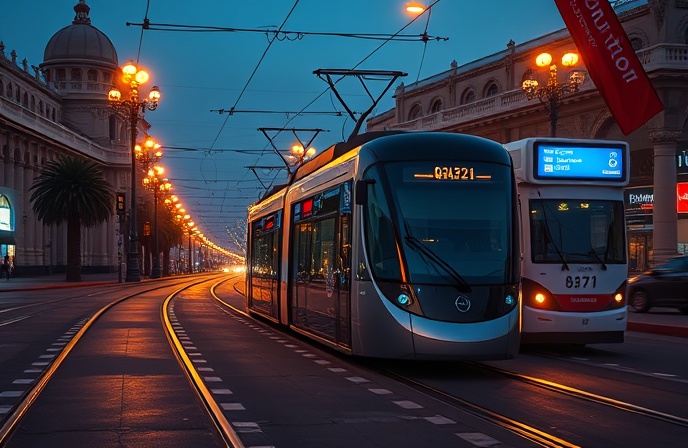Rail Infrastructure: Enhancements, Technology & Future Growth
Here are a few voiceover-friendly excerpts tailored for railway professionals:
**Option 1 (Focus on Track & Signals):**
> Modernizing rail infrastructure means safer, more efficient systems. Upgraded tracks and advanced signaling, like PTC and CBTC, are key.
**Option 2 (Focus on Passenger Experience):**
> Enhancing the passenger experience is our priority! Rolling stock, stations, and signaling – we’re revolutionizing rail for the future.
**Option 3 (Focus on Future/Sustainability):**
> Rail’s future is now. Strategic investments in advanced technologies and infrastructure will deliver more efficient and sustainable transportation solutions.

**Enhancing Rail Infrastructure: A Deep Dive into Modernization and Efficiency**
The railway industry is undergoing a period of rapid transformation, driven by the need for increased capacity, improved safety, and enhanced passenger experience. This evolution necessitates a comprehensive approach to infrastructure development, encompassing everything from track upgrades and signaling systems to rolling stock modernization and station enhancements. This article will explore the key facets of railway infrastructure improvements, focusing on the challenges and opportunities presented by these advancements. We’ll delve into the core elements driving these changes, examining how technological innovations and strategic planning are reshaping the landscape of modern rail transportation. The focus will be on creating a more efficient, sustainable, and passenger-centric railway system. The goal is to provide a detailed perspective on the factors that contribute to a robust and reliable rail network, critical for economic growth and societal well-being.
**Track and Signal Upgrades: The Foundation of a Modern Railway**
The backbone of any railway system is its track infrastructure. Modernization efforts often begin with track upgrades, which include the replacement of aging rails, the implementation of advanced track geometry management systems, and the use of more durable materials. These upgrades enhance the overall safety and reliability of the railway, reducing the risk of derailments and track failures. Furthermore, they contribute to smoother rides for passengers and lower maintenance costs over the long term. Beyond the physical track itself, sophisticated signaling systems play a crucial role in enhancing capacity and safety.
Advanced signaling technologies, such as Positive Train Control (PTC) and Communications-Based Train Control (CBTC), allow for more precise train management and greater operational efficiency. PTC, for instance, is designed to automatically stop a train before certain accidents occur, significantly reducing the potential for collisions and overspeeding incidents. CBTC, commonly used in urban transit systems, enables trains to operate at closer headways, thereby increasing the overall capacity of the line. These signaling upgrades are essential for accommodating higher traffic volumes and improving the overall performance of the railway network.
**Rolling Stock Modernization: Passenger Comfort and Operational Efficiency**
Alongside infrastructure upgrades, the modernization of rolling stock is crucial for meeting the demands of today’s passengers. This includes investing in new trains and retrofitting existing ones with updated features. Modern trains often incorporate enhanced passenger amenities such as Wi-Fi, comfortable seating, and improved accessibility features. These upgrades enhance the overall passenger experience, making rail travel more attractive and competitive with other modes of transportation.
Additionally, modern rolling stock is designed with energy efficiency in mind. Features such as regenerative braking and lightweight materials help to reduce energy consumption and lower the environmental impact of rail operations. The implementation of advanced diagnostic systems allows for predictive maintenance, minimizing downtime and increasing the operational availability of the trains. These combined efforts contribute to a more sustainable and cost-effective rail transportation system.
You might be interested in:
**Station Enhancements: Creating Seamless Transit Hubs**
Modern railway stations are more than just places to board and disembark trains; they are integral components of the overall passenger experience. Station enhancements encompass a wide range of improvements, from architectural upgrades and improved accessibility to the integration of passenger information systems and retail amenities.
Upgrading station infrastructure includes expanding platforms to accommodate longer trains, installing elevators and escalators for improved accessibility, and implementing real-time passenger information systems. These improvements enhance passenger flow and reduce congestion, creating a more efficient and user-friendly transit experience. The integration of retail outlets and other amenities also makes stations more attractive and convenient for passengers, encouraging greater ridership. The goal is to create seamless transit hubs that connect different modes of transportation and provide a comfortable and convenient environment for travelers.
**Conclusion: Paving the Way for a Brighter Future in Rail**
In conclusion, the ongoing efforts to improve railway infrastructure represent a crucial investment in the future of transportation. From track and signaling upgrades to rolling stock modernization and station enhancements, these initiatives are essential for creating a more efficient, safe, and passenger-centric rail system.
The adoption of advanced technologies, such as PTC and CBTC, has significantly increased the operational efficiency and safety of railway networks. Simultaneously, the focus on passenger comfort and convenience through modern rolling stock and station improvements has made rail travel a more attractive option for commuters and travelers alike.
Strategic investment in infrastructure is essential to meet the growing demands for rail transportation and support economic growth. In the context of the Barrie GO Line improvements, these projects are vital for enhancing capacity, reducing congestion, and improving the overall passenger experience in the Greater Toronto Area (GTA). These improvements will not only benefit current riders but also accommodate future growth and development.
By prioritizing innovation, sustainability, and passenger needs, the railway industry can continue to evolve and provide a vital service for years to come. The ongoing commitment to modernizing rail infrastructure is essential for ensuring the long-term viability and success of rail transportation worldwide. The continued improvements in rail technology and infrastructure will contribute to a more sustainable and efficient transportation ecosystem, benefiting both individuals and communities.



